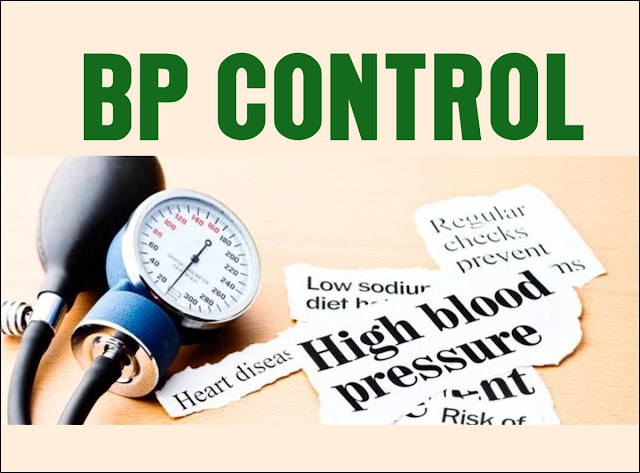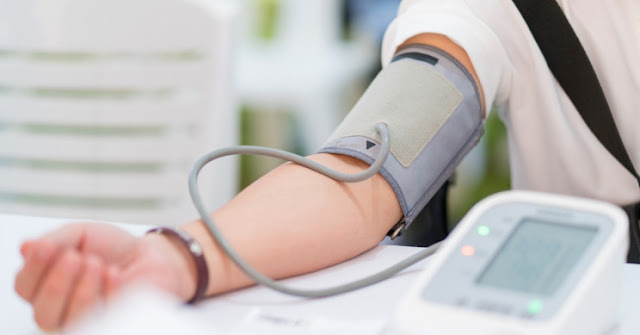How to control BP (Blood Pressure)
“High blood pressure is just a reflection of a cardiovascular system that’s about to burst internally”, says John A. McDougall, MD, medical director of the McDougall Program in Santa Rosa, California, and author of “The McDougall Program for a Healthy Heart.” But if you eat a good diet – lots of fruits and vegetables and whole grains versus rich foods – you can help to change all that,” he says.
According to the National Institute of Health, nearly one in three adults has high blood pressure. By eating a healthy diet, you can make sure that you will not be one of them.
Hypertension Your blood pressure can vary during the course of the day, even from minute to minute. Your heart pumps blood throughout your body through a system of arteries.With every heart beat a new wave of blood is sent out and your blood pressure goes up. This is your systolic blood pressure. This is your diastolic blood pressure. When you have your blood pressure tested, you’re given two numbers ( your systolic over your diastolic ) measure in millimeters of mercury (mm Hg).A sample blood pressure might be 135/68 mm Hg.
All your organs depend on a reliable blood flow that courses through your delicate “plumbing”.When you develop chronic high blood pressure, or hypertension, trouble follows.
High-pressure blood whooshes through the arteries with damaging force. Your heart has to struggle harder to push out the blood, and it may grow enlarged and unable to bear the extra strain. Your arteries, which should be elastic and flexible, may more rapidly grow stiff and narrow. They may deliver less blood to your organs, and a blood clot can more readily get “stuck” and totally block the flow, causing a heart attack.
In most cases, doctors don’t know the exact cause of high blood pressure. But they do know the preventable lifestyle factors that increase your change of getting into problems: being overweight or obese, excessive use of alcohol , a diet that contains too much salt or too little potassium, smoking, a sedentary lifestyle, chronic stress, and taking certain medications. Other risk factors can’t be changed: your age ( high blood pressure is more common in middle age and after), your race (it’s more common in African Americans than Caucasians),and family history of high blood pressure.
The National Institutes of Health (NIH) and the American Heart Association use the following classifications to identify normal and high blood pressure:
Blood Pressure Classification Systolic Blood Pressure Diastolic Blood Pressure Normal less than 120 less than 80 Prehypertension 120 – 139 80 – 89 Stage 1 hypertension 140 – 159 90 – 99 Stage 2 hypertension more than 160 more than 100
Even if your blood pressure falls into the normal or “prehypertension” categories, it’s not time to breathe a sigh of relief. Your risk of death from heart disease or stroke rises progressively as your blood pressure goes up in theses early stages. In other words – you need to get starting concerned well before you have a diagnosis of hypertension.
Research from the major, long-running Framingham Heart Study shows that having systolic blood pressure between 130 and 139 or diastolic blood pressure between 885 and 89 may more than double your risk of cardiovascular disease versus having blood pressure in the “normal” range.
According to the NIH, people in the prehypertension category should be “firmly and unambiguously advised to practice lifestyle modifications in order to reduce their risk of developing hypertension in the future.”
Mild high blood pressure responds well to non drug therapies. If you feed and exercise your body well, you may be able to avoid blood pressure drugs (and their often troublesome side effects ) and calm your rushing blood. Don’t be misled by the “mild” label, though. “Most heart attacks and strokes that occur does in people with stage 1 high blood pressure,” says Norman Kaplan, MD, professor of internal medicine and hypertension specialist at the University of Texas Southwestern Medical Center at Dallas.
Give Your Heart a Break Losing weight – even just 10 pounds – can reduce your blood pressure or prevent you from developing hypertension. There is a connection between excess weight and hypertension. The more tissue you have in your body, the harder your heart has to pump to feed it. And that work exerts more pressure on your artery walls.
Everybody knows that loosing weight is easier said than done. But exercise makes it easier. And the best weight loss diet is the same as the best diet for controlling blood pressure: low fat and lots of fruits and vegetables.
Facts about Salt Experts believe that many people with high blood pressure are salt “responders”, meaning that their blood pressure levels depend on the amount of salt they eat. “But there is some controversy about the issue”, says Prof. Lawrence Appel.
“Some people have a greater response than others. Older people tend to be more sensitive to salt. If you eat more than the recommended 2,400 mg limit – your blood pressure rises.If you’re sensitive to salt, the sodium it contains makes your body attract more water like a sponge. You soak it up and your blood vessels expand with it producing higher pressure.
“If you have high blood pressure, your salt intake has to be reduced by half”, says Dr. Kaplan. “Don’t put salt on the table or in the food you cook.Avoid most processed foods, which is where 80% of the sodium in American diets comes from. If that doesn’t bring your blood pressure down, then sodium isn’t the culprit”, he says.
According to the NIH, reducing sodium in your diet to no more than 2,400 mgs daily (equal to about a teaspoon table salt) will lower your systolic blood pressure by 2- 8 mm Hg. An even better goal is to reduce your daily sodium intake to 1,500 mgs, or 2/3 teaspoon, to lower your blood pressure even further.
Mining for Minerals Potassium and calcium are two minerals that help the blood vessels relax. When arteries relax, they dilate, or open up and give blood the room it needs to move calmly.
You can think of potassium as the opposite of sodium, potassium helps the body excrete sodium. The more potassium you get in your diet, the more sodium you get rid of. A diet high in vegetables and fruits almost mimics a vegetarian diet, which is known to be linked to lower blood pressure. Foods that are rich in potassium includes beans, potatoes, avocados, bananas and apricots.
Calcium has shown similar ties to blood pressure in studies. Some have found that low intake a actually a risk factor for developing high blood pressure. Since regular diary foods contain saturated fat, it’s wise to make sure that you get your calcium from low-fat or fat-free dairy products.
Besides low-fat diary products, your best sources of calcium include tofu, kale, broccoli, and collard greens.
Baking soda and baking powder are both sodium bicarbonate. Dried fruit contains sodium sulfate, and ice cream often has sodium caseinate and sodium alginate.
Instant chocolate-flavored pudding. A half-cup contains 470 mg sodium. Ketchup. One tablespoon contains 156 mg sodium Pastries. A fruit Danish has 333 mg of sodium, while a cheese Danish has 319 mg. Scones and baking- powder biscuits also tend to be high in sodium. Cheese. Most types are high in sodium. This includes cottage cheese, which has 425 mg in a half-cup serving.
Eating Right For starters, you should practice what Dr. Appel calls “active shopping”. In other words: Read the nutrition labels and be sure to look at the sodium content. Sodium-free is a good phrase to look for a label, so is low-sodium. The word “light” is, however, is not as conclusive. Light soy sauce, for example, can still have 605 mg sodium per tablespoon.
Bread too is occasionally high in salt. If you buy bread fresh at a bakery, where it isn’t labeled, don’t be shy about asking how much salt is in each loaf.
When you’re buying canned foods, salt can be a real problem. In many cases, however, rinsing the food will eliminate a good percentage of the salt.
Since produce is the cornerstone of a diet for healthy blood pressue, you should always be looking for ways to eat more fruits and vegetables. Here are a few of Dr. Lin’s suggestions:
- Buy prepackaged salads for busy days ( best to rinse it before using, however.
- Order a fruit plate as an appetizer before your meal at a restaurant.
- Eat two vegetarian dinners per week.
When you’re buying produce, make sure you choose some oranges, apples and pears. These fruits are fiber kings. And heart researchers are starting to find that not only fiber decrease dangerous cholesterol, it may also lower blood pressure.






No comments